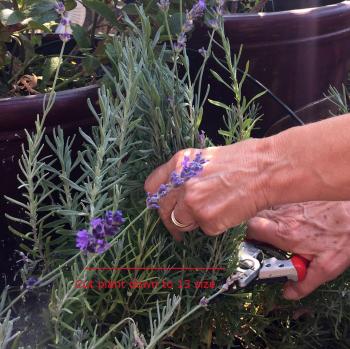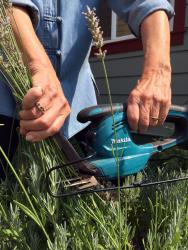Professional Native Landscape Design
Latest Post
Pruning Lavender for Best Bloom
posted: August 12th, 2025
Fall is in the air and it's time to begin preparing your garden for the long, cold winter.
Among the first plants that need to be "put to bed" are our favorite lavender varieties. We grow it because it's beautiful, the flowers last a long time and are fragrant, and the deer don't eat it! In addition, you can also distill the flowers for lavender oil and essence (hydrosol). This practice will keep your plants from becoming woody and will keep the production high for the effective life of the plant - 4-5 years.
This advice comes primarily from speaking with commercial growers out in the Applegate Valley while touring the Applegate Lavender Tour in summer. I was curious to know how they maintain such healthy plants and increase flower production for maximum essence and oil yields. These guys do it for a living, so their pruning practices are good enough for my garden.
Right after blooms fade, (late August to early September) take off the flowers down to the bottom of the stem. This sends a message to the plant that it doesn't have to spend any energy producing seed. The plant will now spend the remainder of the summer increasing root structure to maintain itself over the winter.
When the nights begin to turn cold *40 degrees* between now and Halloween, the days are short and it's time to prune the plant back to the first green growth area. If this is a new plant, go ahead and just prune back by 2/3 - leaving 1/3 to overwinter. Your plants will be much bigger and bushier next year.
If you have a lot of plants, using a grass clipper like the Makita 18 volt rechargeable unit I have makes quick work of pruning lavender.





